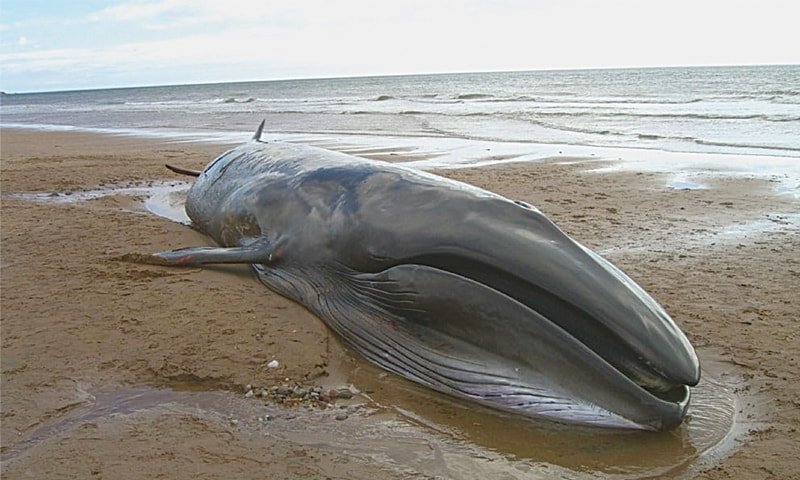In the waters off the coast of Jiwani in the Gwadar district of Balochistan, a giant blue whale has been discovered dead.

In the waters off the coast of Jiwani in the Gwadar district of Balochistan, a giant blue whale has been discovered dead. The carcass was found by neighbourhood fishermen on Friday morning.
Officials from the fisheries department claim that the dead whale was swept up close to the shore of Bandri near Jiwani due to strong waves. A senior researcher with the WWF named Sudhir Baloch claims that the giant blue whale was 42 feet long and weighed more than 20 tonnes.
According to WWF Technical Advisor Muhammad Muazzam Khan Durrani, who also mentioned that the causes of death were being looked into, the blue whale is one of the most endangered aquatic species.
He added, “DNA samples have been collected for analysis and the whale’s body has been taken into custody by the WWF team.
The blue whale is a marine mammal that has been frequently sighted off the coast of Makran, according to Abdul Rahim Baloch, a marine life expert. Despite people calling it a rare occurrence.
According to Mr. Baloch, the animal can grow up to 29.9 metres in length and weigh up to 199 tonnes. The Gwadar Development Authority intends to keep the dead whale’s remains intact.
All oceans, excluding the Arctic, are home to blue whales. They move sporadically between breeding grounds in the winter and feeding grounds in the summer, but some data indicates that some populations may not move at all.
Their range in the North Atlantic Ocean spans the subtropics and the Greenland Sea. Both the shelf waters of the eastern United States and the waters off eastern Canada have seen blue whale sightings. From December through March, it’s common to see blue whales with young calves in the Gulf of California (Sea of Cortez), which is thought to be an important calving and nursing area for the species.
There have been reports of blue whale sightings, strandings, and acoustic detections in the Arabian Sea, Bay of Bengal, and Gulf of Aden. Although the migratory routes of these whales are unknown, oceanographic modifications brought on by monsoons may play a role.